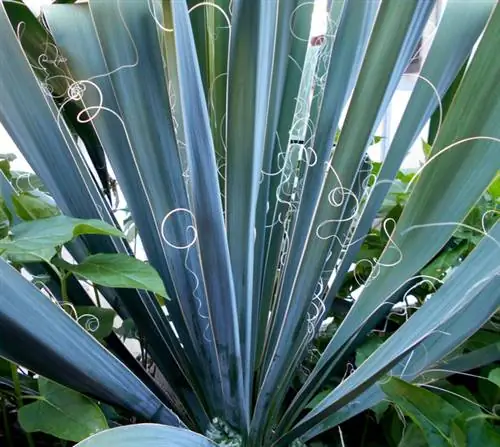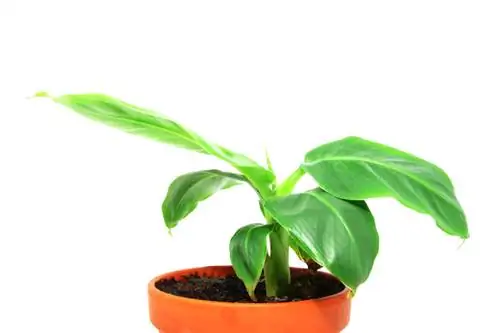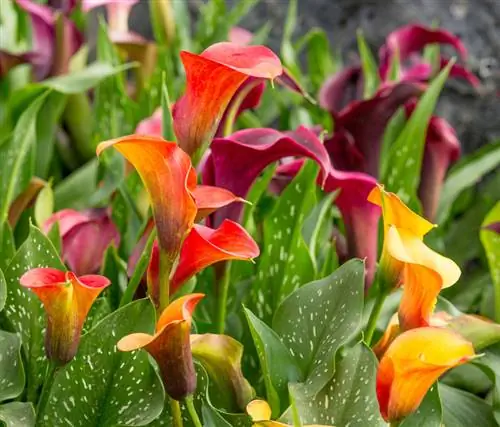- Author admin [email protected].
- Public 2023-12-16 16:46.
- Last modified 2025-01-23 11:21.
The filamentous palm lily (Yucca filamentosa), also known as garden yucca, can be found in many gardens. Between June and July, the asparagus plant impresses with its inflorescences up to two meters high and filled with numerous white, bell-like flowers. The relative of the indoor yucca, which comes from North America, is hardy and is considered extremely easy to care for.

How do you properly care for the Yucca filamentosa?
Caring for the Yucca filamentosa includes a sunny, warm location, well-drained and lime-rich soil, sparing watering, fertilizing once in spring, removing dead shoots and pests as well as winter protection for young plants.
Which location does the garden yucca prefer?
Yucca filamentosa prefers a bright, warm and protected location, preferably in full sun. The plant loves warmth and thrives best in a sunny, south-facing spot in front of a wall or house wall.
In which soil does the Yucca filamentosa feel particularly comfortable?
The soil should be loose and well-drained. The Yucca filamentosa particularly likes lime-rich soil and thrives especially on stony ground.
Do you have to water a planted Yucca filamentosa?
Planted specimens basically don't need to be watered; you may only need to use a watering can during longer dry periods. Use water that contains lime if possible.
When and how often should you fertilize the Yucca filamentosa?
The garden yucca only needs to be fertilized once a year, ideally at the time of the first shoots in spring. Use complete fertilizer, compost, self-mixed plant manure (€56.00 on Amazon) or even pond water. A garden yucca in a pot does not need to be fertilized at all, as long as it is repotted annually into fresh substrate.
Can you cut the Yucca filamentosa?
Pruning is basically not necessary. Only the dead flower shoots and damaged and dried leaves should be removed immediately.
How to propagate Yucca filamentosa?
The easiest way to propagate is through cuttings, which simply have to be separated from the mother plant and planted separately. Reproduction via seeds or division of larger plants is also possible.
What diseases and pests typically affect Yucca filamentosa?
With proper care and the right location, the garden yucca is very robust. Fungal diseases such as root rot caused by waterlogging or leaf spot often cause problems. Otherwise, the Yucca filamentosa is mainly attacked by thrips or scale insects.
Up to how many degrees is the Yucca filamentosa hardy?
The filamentous palm lily can usually survive temperatures down to -15 °C without any problems. However, container specimens belong in the house or another shelter for cool and bright wintering.
How to prepare Yucca filamentosa for winter?
Young garden yuccas in particular are still comparatively sensitive and need winter protection.
Tip
Keep in mind that the garden yucca needs a lot of space. The plant also has very sharp leaves that make it easy to cut.






